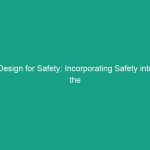Introduction
When it comes to Health, Safety, and Environment (HSE) in the workplace, understanding the risks associated with cold weather is crucial. Cold stress and frostbite can pose serious health threats to workers who are exposed to low temperatures. As temperatures drop, so does the body’s ability to maintain its core temperature, leading to potential health risks if proper Precautions are not taken. This article aims to provide essential cold stress and frostbite Prevention tips that every employer and employee should know. By fostering a safe working environment and adhering to Best Practices, we can effectively mitigate the risks associated with cold exposure.
Understanding Cold Stress
Cold stress occurs when the body loses heat faster than it can produce it, resulting in a drop in core body temperature. This can lead to serious health issues such as hypothermia and frostbite. According to the Occupational Safety and Health Administration (OSHA), cold stress can occur even at temperatures above freezing, particularly when wind chill is a factor. It is essential for both employers and employees to recognize the signs of cold stress, which may include shivering, fatigue, confusion, and loss of coordination.
The Physiology of Cold Stress
To effectively implement cold stress and frostbite prevention measures, it is vital to understand how the body reacts to cold temperatures. The human body maintains its core temperature around 98.6°F (37°C). When exposed to cold, the body initiates various physiological responses, including:
- Vasoconstriction: Blood vessels constrict to preserve core body heat.
- Shivering: Muscles contract involuntarily to generate heat.
- Increased metabolism: The body Burns more energy to produce heat.
However, prolonged exposure to extreme cold can overwhelm these mechanisms, leading to cold stress. Understanding these responses can help in recognizing the importance of preventive measures.
Symptoms and Indicators of Cold Stress
Identifying the signs of cold stress is critical for timely intervention. Common symptoms include:
- Shivering or shaking
- Pale or blue skin
- Fatigue or weakness
- Confusion or disorientation
- Slurred speech or drowsiness
Being aware of these symptoms can help workers and supervisors take immediate action to prevent further complications.
Regulatory Frameworks for Cold Stress Prevention
In the United States, various Regulations and guidelines govern Workplace Safety during cold weather. osha provides a framework that outlines employer responsibilities regarding worker Safety, including the prevention of cold stress.
OSHA Guidelines
Although OSHA does not have a specific standard for cold stress, it emphasizes the importance of assessing risks and implementing appropriate measures. Employers are encouraged to:
- Conduct a thorough risk assessment to identify potential cold exposure.
- Implement a cold stress prevention program tailored to the specific needs of the workforce.
- Train employees on recognizing cold stress symptoms and appropriate responses.
By adhering to these guidelines, employers can create a safer work environment and reduce the likelihood of cold-related illnesses.
Industry-Specific Regulations
Different industries may have additional regulations concerning cold stress prevention. For example, construction and outdoor work environments often have specific Safety protocols that must be followed. Employers should consult relevant industry Standards, such as those from the National Institute for Occupational Safety and Health (NIOSH) and the American National Standards Institute (ANSI), to ensure compliance.
Best Practices for Cold Stress and Frostbite Prevention
Implementing effective cold stress and frostbite prevention strategies is crucial for the well-being of employees. Here are some Best Practices that can be adopted in the workplace:
1. Proper Clothing and Gear
Employees should wear appropriate clothing that protects against cold temperatures. This includes:
- Layered clothing: Wear multiple layers to trap heat effectively.
- Insulated outerwear: Ensure that jackets and pants are insulated and waterproof.
- Protective accessories: Use hats, gloves, and scarves to cover extremities, which are more susceptible to frostbite.
Employers should provide suitable protective gear to workers who are regularly exposed to cold conditions.
2. Establishing Work Rotations
To minimize exposure time in extreme conditions, establish work rotations. This allows workers to take breaks in a warm area, reducing the risk of cold stress. Implementing a buddy system where employees monitor each other for signs of cold stress can also enhance safety.
3. Hydration and Nutrition
Maintaining hydration is critical, even in cold weather. Dehydration can impair the body’s ability to regulate temperature. Encourage workers to drink warm fluids and consume high-energy foods that can help maintain body heat.
4. Training and Awareness
Regular Training sessions should be conducted to educate employees about the risks of cold stress and frostbite. This includes recognizing symptoms, understanding preventive measures, and knowing how to respond in emergencies. Engaging employees in safety meetings fosters a culture of safety and awareness.
5. Emergency Preparedness
Having a clear emergency response plan is essential. This plan should include:
- Immediate steps to take if someone exhibits signs of cold stress.
- First aid Procedures for treating frostbite.
- Access to medical assistance and emergency contact numbers.
Regular drills can help ensure that all employees know how to respond quickly and effectively in a crisis.
Case Studies: Learning from Experience
Real-world case studies can provide valuable insights into effective cold stress and frostbite prevention strategies. Here are a few examples:
Case Study 1: Construction Site Safety
A construction company in the northern United States implemented a comprehensive cold stress prevention program during winter months. They provided insulated gear, conducted training sessions on recognizing symptoms, and established mandatory break times in warm areas. As a result, the company reported a significant decrease in cold-related incidents, emphasizing the importance of proactive measures.
Case Study 2: Outdoor Event Management
An outdoor festival faced challenges with extreme cold weather. The organizers developed a contingency plan that included setting up heated tents for staff, providing hot beverages, and scheduling regular breaks. By prioritizing worker safety, they successfully managed the event without serious incidents related to cold stress.
Challenges in Cold Stress Prevention
Despite the availability of best practices and regulations, several challenges persist in effectively preventing cold stress and frostbite.
1. Underestimation of Risks
Many employers and employees underestimate the dangers of cold exposure, particularly in milder temperatures. This lack of awareness can lead to insufficient preparations and increased risks.
2. Compliance and Enforcement
Ensuring compliance with safety regulations can be challenging, especially in industries with high turnover rates. Continuous training and monitoring are necessary to foster a culture of safety.
3. Resource Limitations
Some organizations may face budget constraints that limit their ability to provide suitable protective gear or implement comprehensive training programs. Finding cost-effective solutions while prioritizing safety is essential.
Future Trends in Cold Stress and Frostbite Prevention
As Workplace Safety continues to evolve, several trends are emerging in the field of cold stress and frostbite prevention:
1. Technological Advancements
The integration of technology in monitoring worker safety is on the rise. Wearable devices that track body temperature and environmental conditions can provide real-time data, enabling employers to take proactive measures against cold stress.
2. Enhanced Training Programs
With the increasing emphasis on worker well-being, training programs are becoming more sophisticated, incorporating virtual reality (VR) and interactive learning methods to engage employees effectively.
3. Policy Development
As awareness of cold stress grows, more organizations are developing dedicated policies that address cold weather safety comprehensively, ensuring that employees are protected regardless of the conditions.
Conclusion
In conclusion, understanding and implementing effective cold stress and frostbite prevention strategies is vital for maintaining a safe workplace during cold weather. By adhering to regulations, adopting best practices, and learning from case studies, employers can create a culture of safety that prioritizes the health and well-being of workers. It is imperative that all employees are educated about the risks and responsive measures associated with cold stress. Let us commit to making safety a priority, ensuring that everyone returns home healthy and unharmed, regardless of the temperature outside.
Call to Action: Assess your workplace today for potential cold stress risks and take proactive steps to safeguard your employees. Together, we can create a safer work environment.


